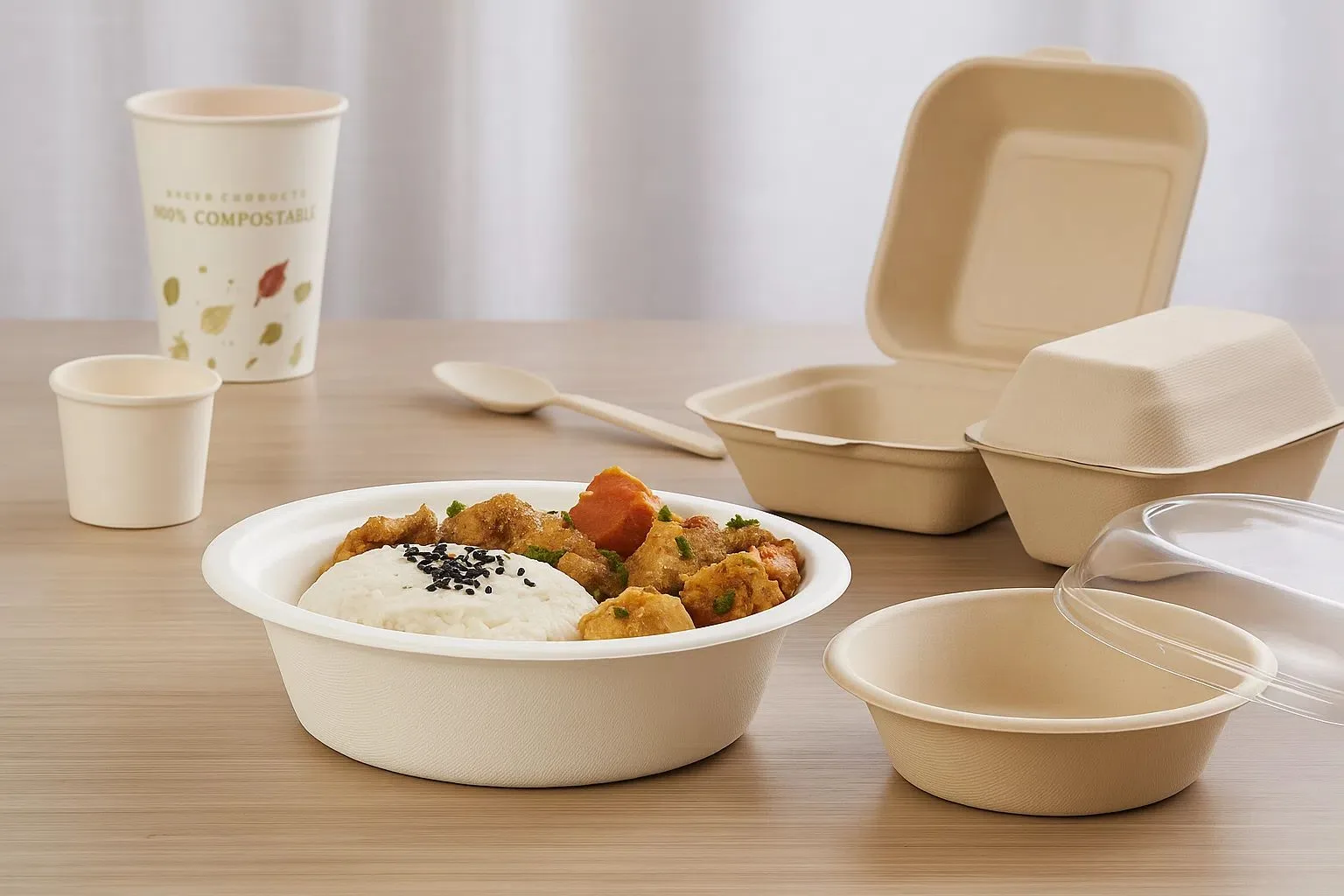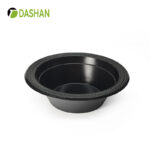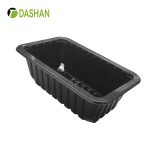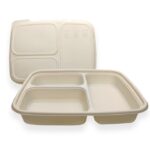As the world becomes more environmentally conscious, many people are asking, “What exactly is plant-based cutlery?” At first glance, it may seem like just another alternative to plastic forks and spoons—but in reality, it’s part of a much larger shift toward eco friendly cutlery and zero waste living. From casual picnics to large catered events, plant-based disposable cutlery has rapidly become a sustainable favorite.
This article explores the origins, materials, environmental benefits, and practical use cases of plant-based disposable cutlery, including plant starch cutlery, cornstarch cutlery, and CPLA cutlery. We’ll dive into real-world applications, scientific data, and address common questions—so you can confidently make better choices for both convenience and the planet.
What Is Plant-Based Cutlery Made Of?
Plant-based cutlery refers to single-use or reusable utensils made from renewable biological sources instead of petroleum-based plastics. Common materials include:
Types of Plant-Based Materials
-
Cornstarch Cutlery: Made from PLA (polylactic acid) derived from fermented corn sugar.
-
Plant Starch Cutlery (PSC): A mix of renewable starch (corn, potatoes, etc.) and sometimes small amounts of polypropylene.
-
CPLA Cutlery (Crystallized PLA): Heat-resistant, durable, and compostable in industrial settings.
These materials offer a significant reduction in carbon footprint compared to traditional plastics. CPLA, for instance, produces up to 80% less greenhouse gas emissions during manufacturing.

Material Comparison Table
| Material | Source | Compostable | Heat Resistance | Durability | Recyclable? | Best Use Cases |
|---|---|---|---|---|---|---|
| PLA (Polylactic Acid) | Corn | ✅ (industrial composting) | ❌ (~40°C / 104°F max) | Medium | ❌ Not recyclable curbside | Cold foods, take |
| CPLA (Crystallized PLA) | Crystallized PLA from corn | ✅ (certified | ✅ (~90°C / | High | ❌ Not recyclable | Hot foods, catering, restaurant use |
| Plant Starch Cutlery (PSC) | Corn starch | ❌ (not fully compostable) | ✅ (~100°C / 212°F max) | Very high | ❌ Mixed materials | Heavy-duty meals, high-temperature applications |
| Bamboo (for comparison) | Bamboo wood | ✅ (home compostable | ✅ | Reusable | ❌ | Reusable sets |
Summary of Key Differences
-
PLA is compostable but not suitable for hot foods.
-
CPLA is compostable and heat-resistant, making it ideal for most foodservice needs.
-
PSC is sturdy but not truly compostable due to plastic blends—often marketed as “eco-friendly” but should be avoided if zero waste is the goal.
-
Bamboo is reusable and biodegradable, often considered for plant-based disposable cutlery vs bamboo comparisons.
This comparison helps buyers choose the best material based on their needs—whether it’s for a zero-waste picnic, restaurant takeaway, or wedding catering.
Benefits of Using Plant-Based Disposable Cutlery
Choosing plant-based biodegradable spoons and forks offers both ecological and functional advantages:
Environmental Impact
-
Compostable cutlery can decompose within 90–180 days in commercial composting facilities.
-
Derived from renewable resources, reducing dependence on fossil fuels.
-
Often certified compostable, ensuring end-of-life processing is safe for the planet.
Practical Use Cases
-
Ideal for takeaway meals, office catering, and zero-waste events.
-
Popular in cafés, restaurants, and weddings for a stylish, eco-conscious appearance.
Many suppliers now offer compostable plant-based cutlery sets for weddings, as well as plant-based compostable knives for catering, showcasing the versatility of these materials.

Scientific Data & Real-World Applications
Scientific Insight – Compostability vs Plastic Persistence
According to a study published in the Journal of Polymers and the Environment (2022):
-
CPLA utensils decomposed fully within 12 weeks in an industrial compost facility.
-
Traditional plastic utensils (polypropylene or polystyrene) showed no degradation after 2 years in similar conditions.
Another report by European Bioplastics showed that PLA-based cutlery reduces CO₂ emissions by 60% compared to petroleum-based alternatives.
Case Study 1 – California’s State University System
The CSU system replaced plastic utensils across 23 campuses with plant-based disposable cutlery. This led to:
-
A 30% reduction in food-service plastic waste.
-
Increased student participation in sustainability programs.
-
Most campuses now use certified compostable plant-based utensils for all catering events.
Case Study 2 – Zero-Waste Festival in Australia
At the “EarthBeat Festival,” organizers adopted vegan-friendly disposable cutlery plant-based options exclusively:
-
Over 5,000 cutlery sets were used and composted on-site.
-
Compost was used in local community gardens.
-
Their switch inspired a 12% increase in similar practices across other regional events.
Where to Buy Plant-Based Disposable Utensils?
With increasing demand, it’s easier than ever to find affordable plant-based disposable cutlery wholesale or retail options.
Best Options for Consumers and Businesses
-
Online Eco Stores: Great for plant-based disposable utensils for picnics or home use.
-
Bulk Suppliers: Offer competitive pricing for restaurants, catering, and event planners.
-
Custom Branding: Many vendors now offer PLA plant-based forks spoons knives sets with logos for sustainable plant-based cutlery for restaurants.
When shopping, always look for products labeled:
-
Certified compostable (BPI, TÜV Austria, or OK Compost logos)
-
BPA-free and plastic-free
-
Suitable for hot and cold foods

How to Choose the Right Plant-Based Cutlery
Selecting the best eco friendly cutlery depends on your needs:
Personal Use
-
Family picnics or parties: Look for plant-based disposable spoons for ice cream or general picnic kits.
-
Check for easy disposal methods (compost collection nearby).
Business Use
-
Restaurants or cafés: Opt for sustainable plant-based cutlery for takeaway.
-
Consider branding for customer loyalty and green credentials.
Events and Catering
-
Compostable plant-based cutlery sets for weddings add elegance and sustainability.
-
Coordinate with composting facilities for proper disposal.
Conclusion: What Is Plant-Based Cutlery?
Plant-based cutlery is more than a green trend—it’s a practical, scalable, and sustainable solution to the plastic crisis. Whether made from cornstarch, plant starch, or CPLA, these utensils offer biodegradable and compostable alternatives to traditional plastic—without compromising functionality.
From everyday picnics to formal catered events, choosing plant-based disposable cutlery reduces waste, lowers emissions, and helps promote a zero-waste lifestyle. As infrastructure and awareness grow, so too does our ability to shift toward genuinely sustainable solutions.
So the next time you grab a spoon or fork, ask yourself: Is it plant-powered?
❓ FAQs About Plant-Based Cutlery
Q1: Is plant-based cutlery really biodegradable?
Yes, most plant-based cutlery like PLA and CPLA can biodegrade in industrial composting facilities within 90–180 days. However, home composting may not always be effective unless the product is specifically certified.
Q2: Can plant-based cutlery handle hot foods?
CPLA and plant starch cutlery can withstand higher heat (up to 90–100°C), making them suitable for soups and hot meals. PLA and cornstarch cutlery are better suited for cold or room-temperature dishes.
Q3: How does plant-based cutlery compare to bamboo utensils?
Bamboo utensils are reusable and home-compostable, while plant-based cutlery is ideal for single-use, cost-effective catering, and certified commercial composting.
Q4: Is plant-based cutlery recyclable?
No, plant-based cutlery is not recyclable in traditional curbside recycling streams. Its proper disposal method is industrial composting.
Q5: Where can I buy plant-based disposable cutlery?
They are widely available through eco-friendly online stores, wholesale suppliers for restaurants and catering, and companies offering custom-branded compostable utensils.
📚 References
-
European Bioplastics – Bioplastics Facts and Figures
https://www.european-bioplastics.org/bioplastics/facts-and-figures/ -
Journal of Polymers and the Environment (2022) – Biodegradability of PLA and CPLA in Industrial Composting
https://link.springer.com/journal/10924 -
U.S. Environmental Protection Agency – Sustainable Management of Plastics
https://www.epa.gov/smm/sustainable-management-plastics -
Biodegradable Products Institute (BPI) – Certified Compostable Products
https://bpiworld.org/ -
Ellen MacArthur Foundation – The New Plastics Economy: Rethinking the Future of Plastics
https://ellenmacarthurfoundation.org/the-new-plastics-economy -
Zero Waste International Alliance – Principles and Case Studies
https://zwia.org/ -
NatureWorks – PLA Biopolymer Data
https://www.natureworksllc.com/ -
ASTM International – Compostability Standards (ASTM D6400, D6868)
https://www.astm.org/




